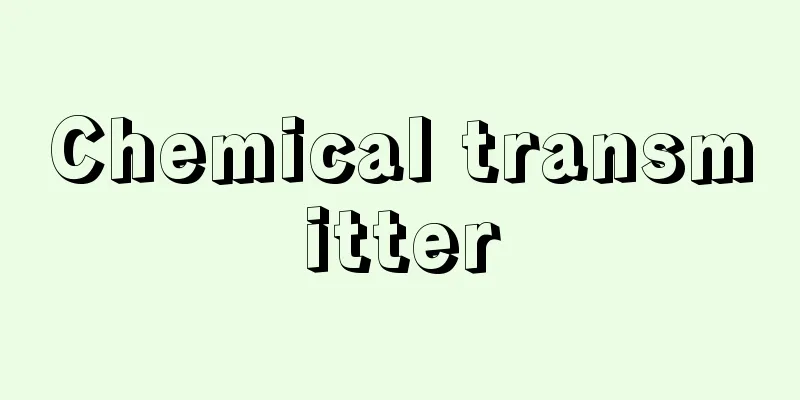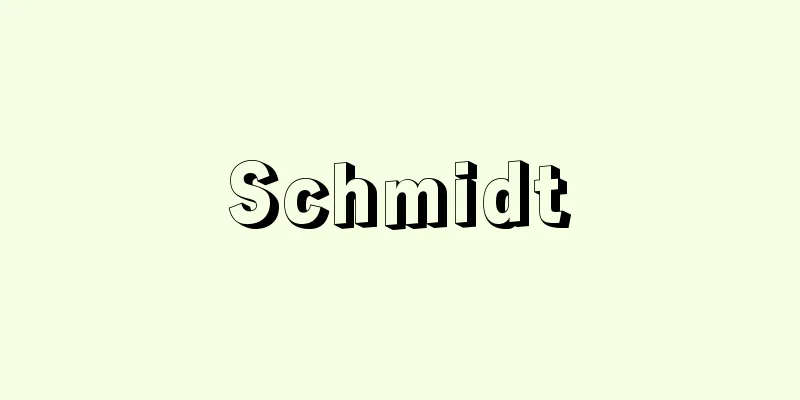Chemical transmitter

|
A general term for substances released from the nerve endings and sensory cells of animals that mediate chemical transmission. They are also called neurotransmitters or transmitters. In a typical example of chemical transmission, information from an electrical impulse in a nerve is first converted into chemical information, and then converted back into electrical information by the next cell. There are many known transmitters, including acetylcholine at the neuromuscular junction and parasympathetic nerve endings, noradrenaline at the sympathetic nerve endings, gamma-aminobutyric acid (GABA) at the inhibitory synapses of crustacean stretch receptors, serotonin (5-hydroxytryptamine, abbreviated as 5-HT), dopamine, glutamate, adenosine triphosphate (ATP), and endorphins involved in the inhibition of pain sensation in the central nervous system. Typical transmitters such as acetylcholine are stored in synaptic vesicles with a diameter of 40 to 200 nanometers, and the shape and size of the synaptic vesicles vary depending on the substance. When an action potential arrives at the nerve terminal and the presynaptic membrane is depolarized, calcium ions flow in from outside the membrane, synaptic vesicles fuse with the presynaptic membrane, and the transmitters inside are released. The transmitters diffuse through the 20-50 nanometer synaptic cleft to reach the subsynaptic membrane, where they bind to specific receptors, changing the ion permeability of the subsynaptic membrane and generating a postsynaptic potential. This occurs when chemical transmitters bind as ligands to ligand-gated ion channels and open the channels. There are two types of postsynaptic potentials: depolarized excitatory postsynaptic potentials (EPSPs) and hyperpolarized inhibitory postsynaptic potentials (IPSPs). Inhibitory synaptic transmissions do not involve obvious potential changes. Some of these include cases where the presynaptic fiber has another synapse that limits the amount of transmitter released, and this function is called presynaptic inhibition. In principle, whether synaptic transmission is excitatory or inhibitory is determined by the receptor, not by the transmitter. For example, acetylcholine is known to act both excitatory and inhibitory in the ganglion of Aplysia. Transmitters are not released as individual molecules, but in units of a fixed amount (quantum) contained in synaptic vesicles (quantal release). Even when the presynaptic fiber is in a resting state, transmitters are released from synaptic vesicles at low frequency, generating a small postsynaptic potential of just under 1 millivolt in the postsynaptic fiber. An ion channel opened by a single acetylcholine receptor causes a depolarization of 0.2 microvolts for an average of 1 to 1.5 milliseconds, and a small postsynaptic potential of just under 1 millivolt corresponds to the opening of approximately 1,500 channels. When a single ion channel opens, a current of several picoamperes (pico is 10 -12 ) flows. Receptors such as acetylcholine and GABA are membrane proteins with similar structures and are thought to have a common origin. [Akira Murakami] [Reference] | |Source: Shogakukan Encyclopedia Nipponica About Encyclopedia Nipponica Information | Legend |
|
動物の神経末端および感覚細胞から放出され、化学的伝達の仲立ちをする物質の総称。神経伝達物質または伝達物質ともいわれる。化学的伝達の典型的な例においては、神経の電気的なインパルスによる情報はいったん化学的情報に置き換えられ、次の細胞でふたたび電気的情報に変えられる。伝達物質として、神経筋接合部および副交感神経末端のアセチルコリン、交感神経末端のノルアドレナリン、甲殻類伸張受容器の抑制性シナプスにおけるγ(ガンマ)-アミノ酪酸(GABA)のほか、セロトニン(5-ヒドロキシトリプタミン、略称5-HT)、ドーパミン、グルタミン酸、アデノシン三リン酸(ATP)や、中枢において痛覚の抑制に関与するエンドルフィン類など、多くのものが知られている。アセチルコリンなどの典型的な伝達物質は、直径40~200ナノメートルのシナプス小胞中に蓄えられており、その物質ごとにシナプス小胞の形と大きさが異なっている。神経末端に活動電位が到着してシナプス前膜が脱分極すると、膜外よりカルシウムイオンが流入し、シナプス小胞がシナプス前膜と融合して、中の伝達物質が放出される。伝達物質は20~50ナノメートルのシナプス間隙(かんげき)を拡散してシナプス下膜に達し、そこで特定のレセプターと結合してシナプス下膜のイオン透過性を変化させ、シナプス後電位を発生させる。これは、化学伝達物質が、リガンド依存性イオンチャンネルに、リガンドとして結合し、チャンネルを開くことによる。シナプス後電位には、脱分極性の興奮性シナプス後電位(EPSP)と、過分極性の抑制性シナプス後電位(IPSP)がある。また、抑制性シナプス伝達には明白な電位変化を伴わないものがある。このなかには、シナプス前繊維にさらに別のシナプスがあり伝達物質の放出量を制限する場合が含まれており、この働きはシナプス前抑制とよばれる。シナプス伝達が興奮性であるか抑制性であるかは、原則的には伝達物質によらず、レセプターにより定まる。たとえばアセチルコリンは、アメフラシの神経節では、興奮性にも抑制性にも働いていることが知られている。 伝達物質は、一個一個の分子としてではなく、シナプス小胞に含まれる一定量(素量)が単位となって放出される(素量的放出)。シナプス前繊維が休止状態にあっても、低頻度でシナプス小胞より伝達物質が放出され、シナプス後繊維に1ミリボルト弱の微小シナプス後電位を発生させる。アセチルコリンレセプター1個により開くイオンチャンネルは、平均1~1.5ミリ秒の間0.2マイクロボルトの脱分極をおこし、また1ミリボルト弱の微小シナプス後電位は、約1500のチャンネルが開くことに対応する。1個のイオンチャンネルが開くと数ピコアンペア(ピコは10-12)の電流が流れる。アセチルコリン、GABAなどのレセプターは、類似の構造をもった膜タンパク質であり、共通の起源をもつと考えられる。 [村上 彰] [参照項目] | |出典 小学館 日本大百科全書(ニッポニカ)日本大百科全書(ニッポニカ)について 情報 | 凡例 |
>>: "A new system of chemical philosophy"
Recommend
Oar
[ I ] In the substitution nomenclature of alcohol...
Conrad Mei(j)t
German sculptor. Born in Worms. From 1506 to 1509...
Warm sake bottle - Kandokuri
〘 noun 〙 A tokkuri used to warm sake. Kantsubo (wa...
Cholula (English spelling)
Its official name is Cholula de Rivadabia. It is a...
Kurokawa [Hot Springs] - Kurokawa
This hot spring is a national health resort locate...
Rājarāja I
?-1016 A king who restored the Chola dynasty of so...
Bonfigli, B. (English spelling) BonfigliB
... refers to a school of painting in the Umbria ...
Yuasa Hangetsu
Born: February 16, 1858 (5th year of the Ansei Era...
rhodium
Rh. Element with atomic number 45. Group 9 precio...
roth fail
…These are figures related to the sun, which show...
Romanist (English spelling) Romanisten [Netherlands]
16th century Netherlandish painters who studied in...
Paddle - Kai
A boat propulsion device. There are two types of ...
Vowel change - Vocalic change
Historical changes in vowels. There are two types ...
China Lobby (English)
An American political group. It began by supportin...
austempering
…The S curve is used to determine the quenching c...





![Hayakita [town] - Hayakita](/upload/images/67cc8e4a7092b.webp)



